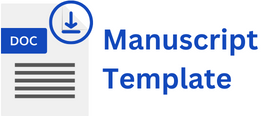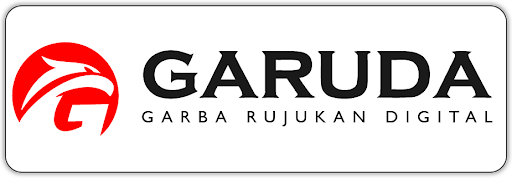2963-3028
Submissions
Author Guidelines
Journal of Applied Agriculture, Health and Technology, abbreviated JAHT, is an open-access, peer-reviewed journal published biannually. JAHT aims to update the applied agriculture, pharmacy, health community issues, applied engineering, and technology and accepts original research, review articles, and short communications. Published by the Vocational School of Universitas Sebelas Maret Indonesia regularly (twice a year) in June and December
Manuscript preparation guideline
Manuscript should be prepared as Journal of Applied Agriculture, Health and Technology template using Microsoft word program along with extension either dox or docx. Manuscript should orderly consist of title, author(s) name, affiliation(s), abstract, keywords, introduction, material and methods, results and discussion, conclusion, and acknowledgement, declaration of interest, references. Manuscript preparation should use Times New Roman font along with font size of 12 pt (expt. Title (12 pt) and highlighted with bold character) with 1 space. Each page must be added by page number and line number restarted for each page.
Title
Title should be concise, clear and informative title. Title must be specific, not ambiguous, and no containing an uncommon abbreviation.
Author name and affiliation
Author name comprises first name and surname/last name. Author name(s) must be written without academic degree and not allowed to abbreviate the last name.
Affiliation should be written clearly along with department/unit/faculty, and institution name and address. Corresponding author must be highlighted with superscript asterisk (*) behind the last name. The Corresponding Author must indicate his or her complete mailing address, office/cellular phone number, fax number, and email address at the lower left of the Title Page. Affiliation should be written with font size of 10 pt and italic without full stop.
Abstract and keywords
Abstract is written in a paragraph along with single space. Abstract should consist of introduction (1-2 sentences), purpose(s), method, results, and conclusion concisely. Citation in abstract is avoided and abstract should be written 100-250 words.
Keywords can be provided max. 6 keywords and separated by semicolon without full stop. “Keywords” should be written in bold characters. Keywords should be written in lowercase except if it is common to be written in capital letters e.g. Streptococcus mutans; SNEDDS; Alpinia galanga etc.
Introduction
Introduction should be written clearly comprising general background, state of the art, novelty and originality. This should be brief and indicates the aim of the study and the essential background information.
Materials and Methods
Material should be written completely along with content (if any) and its origin e.g. ethanol form Merck (Darmstadt, Germany)/ethanol (Merck; Darmstadt, Germany) or curcumin <98% obtained from Sigma Aldrich (St. Louis, MO)/curcumin 98% (Sigma Aldrich; St. Louis, MO). Methods should be reliable and can be repeated by other researchers. A published method is enough to cite and it is not necessary to write completely. Instruments/analytical instruments should be written completely i.e. name, type and its origin/headquarter e.g. a Shimadzu U- 2900 spectrophotometer (Tokyo, Japan).
Results and Discussion
Results and Discussion sections should be combined. Results should be stated clearly The discussion should relate the results to the current understanding of the scientific problems being investigated in the field. Results can be shown by table or figure (redundant in displaying the results either in figure or table is not appropriate).
Discussion must explain and point out the results and not repeats the results section. Discussion should answer and analyze the correlation between the results and basic fundamental of concept (Why) and is it any correlation and contradiction with a previous report (What else). Implication of the results either in theory or application is highly recommended to discuss.
Conclusion
Conclusion section should provide brief and clearly explain the main conclusions of the work highlighting its importance and relevance
Acknowledgement
Author can provide an acknowledgement for funding or personal who help in discussion or technical support. In addition, acknowledgement can be convoyed to the industry how help in providing materials in research. Acknowledgement is not given to other authors in the manuscript.
Declaration of Interest
The authors are required to state the declaration of all financial or non-financial competing interest with regards to the publication of their works. If there is no conflict of interest, author must be state “Author(s) name(s) declare(s) that there was no conflict of interest”.
Citation and References
References that is cited in manuscript must correlates with the research and should be checked in the original source. Citation in text should be written and checked completely. It must be ensured that the cited references must be mentioned in references and vice versa. Citation in text is written using author’s surname followed by year. For author more than 1 and less than 3, the author surname should be connected by “&”, meanwhile more than 2 authors, the first surname followed by “et al.” is used.
The references should be prepared in logical order according to the vancouver style. Author/Authors is highly recommended to use reference citation management for manuscript preparation e.g. Zotero, Mendeley etc.
Reference using website should be written completely along with URL address followed by accessed date, month, and year. Additional information can be added in the references e.g. DOI. Complete long-term name of journal should be written.
Example for in text citation and references In text citation
References
Source: Original research article/Journal article
Maheshwari RK, Singh AK, Gaddipati J, Srimal RC. Multiple Biological Activities Of Curcumin:
A Short Review. Life Sci. 2006 Mar 27;78 (18):2081–7.
Source: Books
Miller JN., Miller JC. Statistics and Chemometrics for Analytical Chemistry. 5th ed. Pearson Education Limited, England, Edinburgh Gate Harlow, 2005
Source: Book chapters
Riaz, U., dan Ashraf, S.M. Characterization of Polymer Blends with FTIR Spectroscopy, 625–678, in: Thomas, S., Grohens, Y., and Jyotishkumar, P. (Eds.), Characterization of Polymer Blends. Weinheim: Wiley-VCH Verlag GmbH & Co. KGaA. 2014
Submission Preparation Checklist
All submissions must meet the following requirements.
- The submission has not been previously published, nor is it before another journal for consideration (or an explanation has been provided in Comments to the Editor).
- The submission file is in OpenOffice, Microsoft Word, or RTF document file format.
- Where available, URLs for the references have been provided.
- The text is single-spaced; uses a 12-point font; employs italics, rather than underlining (except with URL addresses); and all illustrations, figures, and tables are placed within the text at the appropriate points, rather than at the end.
- The text adheres to the stylistic and bibliographic requirements outlined in the Author Guidelines.
- Donwload JAHT journal final template through this link uns.id/jaht-template










